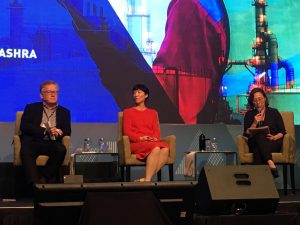International Construction Transformation Conference 2019
The recent International Construction Transformation Conference (ICTC) held at the Malaysia International Trade and Exhibition Centre (MITEC) from 18 to 19 March 2019 shone the spotlight on “Construction Beyond 2020”. The two-day conference is part of Malaysia’s Construction Industry Development Board’s International Construction Week.
In his opening address, Chief Executive of CIDB Malaysia Dato’ Ir. Ahmad ‘Asri Abdul Hamid spoke on technology as the main driver of radical transformation in the construction industry to remain resilient and sustainable in the face of numerous challenges.
“Where once, construction was on the forefront of innovation, some of the current practices has changed little since the 19th century despite the plethora of innovations available,” he said. “As a result, productivity is falling and the construction workforce is shrinking.”
The adoption of digitalisation and new tools that provide higher efficiency, such as building information modelling (BIM), industrialised building systems (IBS) and 3D-printed construction, is a necessity to remain competitive and to deliver projects in a timely and cost-effective manner, he added. “And this change needs to happen quickly and at scale.”
In the face of progress and technological advancements, preserving the environment needs to be at the forefront of the agenda, as highlighted in one of the sessions, titled ‘Green by Design: We Can’t Build Another Planet’, moderated by Serina Hijjas.
The first speaker, Sarah Ichioka of Desire Lines Pte Ltd, Singapore, stressed on the need to go beyond sustainability in the face of the ‘unprecedented emergency’ the planet is facing. “Sustainability is simply an inadequate approach to the compound crisis we humans have inflicted upon ourselves,” she said.
Moving beyond the 4R strategy of sustainable development (reduction, reuse, recycle, recovery), Ichioka presented her own 4Rs: Rebel (let us raise our voices together), Root (let us ground our solutions to our current crisis in the rich history and culture that we inhabit), Relate (let us decipher and communicate the underlying systems that perpetuate this global crisis) and Regenerate (let us draw inspiration from the natural world to craft materials and manufacturing cycles).
The second speaker, Prof Patrick Bellow RDI of environmental design consultants Atelier Ten, London, spoke on the importance of ‘invisible’ yet effective integrated environmental design techniques.
He expounded on how he drew passive design inspirations from nature, such as termite nests and anthills, and Venetian ancient villas, in the design of some of his projects, including The Esplanade: Theatres on the Bay, Gardens by the Bay, Singapore, and Jewel at Changi Airport, Singapore.

Even in tropical heat, there are ways to replace and reduce the need for air-conditioning. “At the outset, it can be reduced by 60 to 80 per cent through architectural design,” said Bellow. “The steps to reduce CO2 should observe the ways of using glass, openings, etc.”
This ‘fabric first’ approach to building design—maximising the performance of components and materials that make up the building fabric itself, before considering the use of mechanical or electrical building services systems—should be the way forward in building environmentally.
“That is where the best investments are made, and they last longer and save costs in the long run,” Bellow added. “Building with the next generation in mind is certainly worth advocating.”


